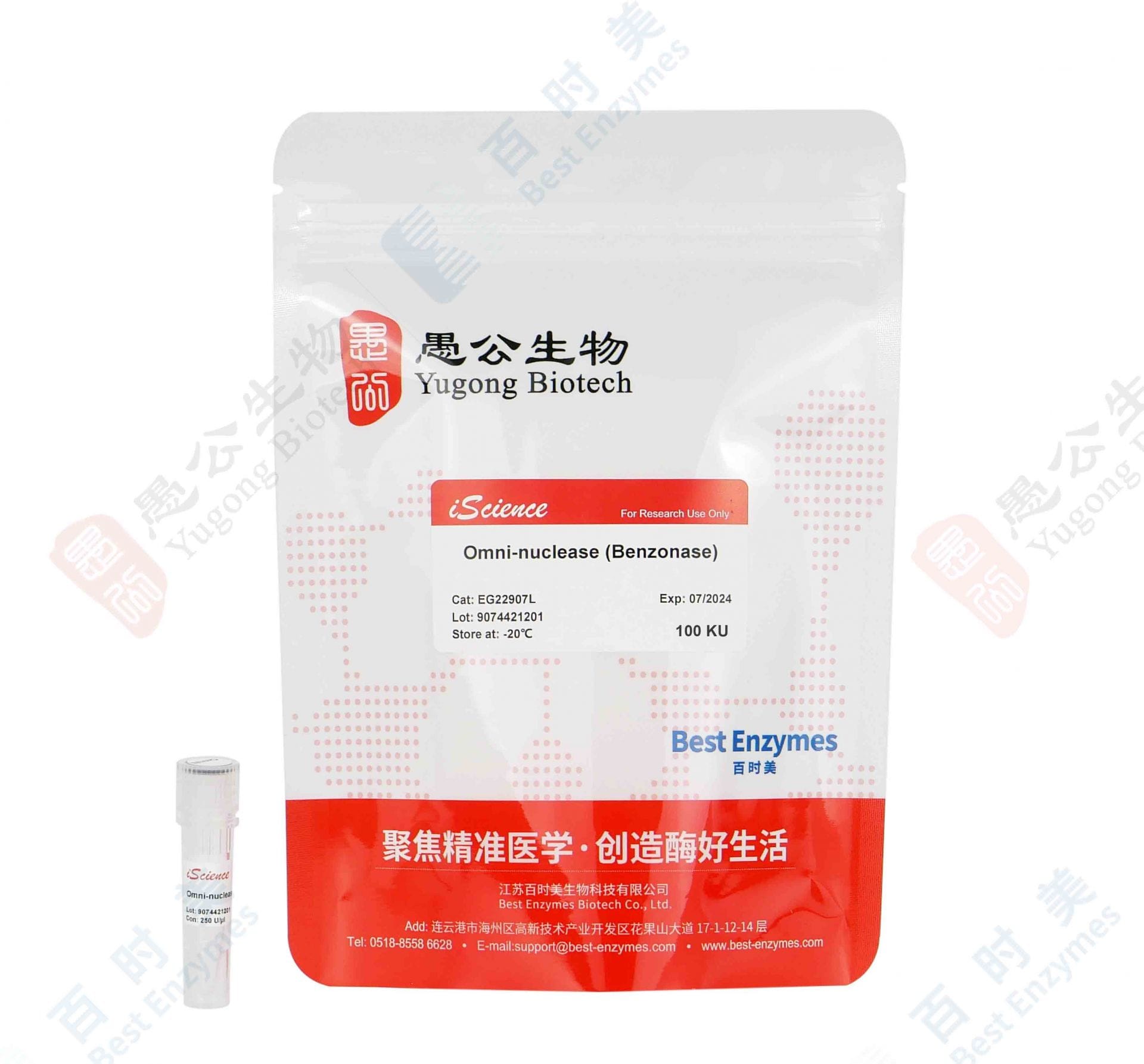Benzonase is a crucial enzyme in the production of many life-saving medications, including those used to combat cancer and viruses. This “molecular Pac-Man” efficiently eliminates DNA and RNA, which can interfere with drug production, ensuring that pharmaceuticals are pure, safe, and effective.
What is Benzonase and How Does It Work?
Benzonase, a genetically engineered enzyme, acts as a powerful cleaning agent for DNA and RNA in biopharmaceutical production. It functions as a microscopic vacuum cleaner, specifically designed to remove unwanted genetic material, ensuring the purity and safety of medicines and other biological products. Derived from Serratia marcescens and produced in E. coli, Benzonase is a non-specific endonuclease, meaning it cleaves all forms of DNA and RNA (single-stranded, double-stranded, linear, and circular) into small fragments (<8 base pairs). Critically, it lacks proteolytic activity, leaving proteins unharmed. Its mechanism of action involves hydrolyzing internal phosphodiester bonds within nucleic acid molecules, reducing viscosity and eliminating interference from unwanted genetic material.
Where is Benzonase Used?
Benzonase is a versatile enzyme utilized in a range of applications:
Biopharmaceutical Manufacturing
Benzonase excels in this area, playing a vital role in purifying protein-based drugs, viral vectors (used in gene therapy), and other biological products. Removing stray DNA and RNA enhances the safety and efficacy of these treatments.
Research Applications
Scientists employ Benzonase in various lab procedures, including PCR tests (like those used for COVID-19 diagnosis) to improve sample cleanliness and accuracy. It also contributes to applications such as DNA sequencing and cell extract preparation.
Why Choose Benzonase?
Several advantages make Benzonase the preferred choice:
- Versatility: Benzonase degrades all forms of DNA and RNA, regardless of their structure.
- Adaptability: It functions effectively under a wide range of pH levels, temperatures, and buffer compositions.
- Scalability: Benzonase can be used for small-scale lab experiments or large-scale drug manufacturing.
- Easy Removal: It can be readily separated from the purified product, commonly via tangential flow filtration. This simplifies downstream processes and maintains product integrity.
Benzonase Products
The following table summarizes common commercially available Benzonase products from Merck Millipore:
| Designation | Package Size | Order Number |
|---|---|---|
| Benzonase® endonuclease Safety Plus | 100,000 U | 1.03773.1010 |
| Benzonase® endonuclease Safety Plus | 500,000 U | 1.03773.0001 |
| Benzonase® endonuclease Safety Plus | 5,000,000 U+50,000 U | 1.03773.0010 |
| Benzonase® endonuclease, purity grade II | 100,000 U/vial | 1.01654.0001 |
(Note: “U” refers to “units,” a measure of enzyme activity.)
Optimizing Benzonase Use
While generally considered safe, maximizing Benzonase effectiveness requires careful optimization:
- Comparing Alternatives: While DNase I and RNase A exist, Benzonase is often preferred in biopharmaceutical applications due to its broader activity, efficiency, and scalability.
- Finding the Sweet Spot: Optimal working conditions, including pH, temperature, and salt concentration, may vary depending on the specific application and likely require fine-tuning. High concentrations of monovalent cations (>50%), phosphate (>20 mM), and ammonium sulfate (>25 mM) can inhibit its activity.
- Troubleshooting: Resources are available to address storage, handling, and troubleshooting issues with Benzonase, ensuring its successful implementation.
The Expanding Role of Benzonase
Ongoing research suggests a promising future for Benzonase, with potential new applications in exciting areas like gene therapy and vaccine production. Researchers are also exploring its use in gene editing and diagnostics, continuously refining our understanding and broadening its potential. Some experts believe it may even hold potential in treating certain diseases, although this remains an area of active investigation.
Is Benzonase Toxic?
“Toxicological studies with Benzonase® endonuclease have been performed (internal reports available). The systemic toxicity after single application was investigated in mice and rats: no toxic effects have been observed even at very high doses.” Although internal reports suggest a strong safety profile, these are not publicly accessible. Contacting Merck directly may provide further insight. While preclinical studies suggest low toxicity, further research is crucial for responsible integration into various applications.
Does Benzonase Degrade RNA?
Yes, Benzonase effectively degrades both DNA and RNA. Its non-specific endonuclease activity makes it a versatile tool, capable of cleaving all forms of RNA, regardless of structure. This distinguishes it from DNase, which specifically targets DNA. Benzonase breaks down nucleic acids into oligonucleotides of approximately 3-5 base pairs—significantly shorter than hybridization limits—ensuring effective removal and preventing interference in downstream applications. This is essential in bioprocessing applications like viral vaccine production and gene therapy manufacturing, where the removal of host cell DNA and RNA is crucial for product purity and safety. Furthermore, Benzonase helps meet regulatory guidelines for nucleic acid contamination in biological products. While current research strongly supports its efficacy, ongoing studies explore its activity with different modified RNAs and under various conditions.
Did you know that some of the most memorable scenes in “Caddyshack” were filmed at Dartmouth College? Find out more intriguing trivia about the making of this classic comedy by visiting caddy shack dartmouth. Celebrities with cleft palate have always been fascinating, and there are many of them. Discover more about their experiences and how they’ve overcome adversity by reading celebs with cleft palate.
- Dickinson Wright: Comprehensive Legal Solutions for Businesses of All Sizes - November 15, 2024
- Donny Deutsch: The Rise and Fall (and Rise?) of a Media Maverick - November 15, 2024
- Diana Olick: CNBC’s Real Estate Expert Navigates the Climate Change Era - November 15, 2024
















